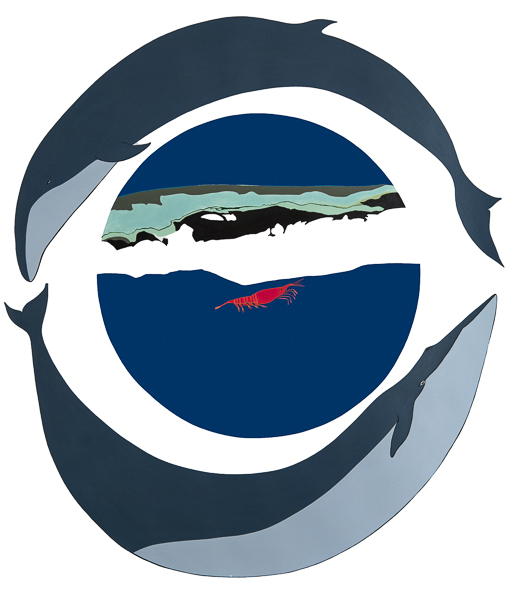
![]()
The Vertical Migration of Antarctic Krill and the Blue Whale
The Antarctic Krill, Euphausia superba, is a keystone species in the southern ocean ecosystem where it makes up a large percentage of the Earthís biomass. Krill are the main consumers of phytoplankton to sustain their open ocean cycle, primarily using the energy that phytoplankton derives from sunlight. Krill have specialized appendages called filtering baskets to obtain their food. In response to algal blooms, krill form a feeding swarm. Swarms migrate to a depth of 100m (328 feet) during the day, to avoid predators, and return at nightfall to the surface to feed. Each swarm of krill is made up of one age group, adults swimming with adults, and juveniles swimming with juveniles. The juveniles tend to stay near the underside of ice where they are more protected and feed on the high density of the microalgae. Adults swim mainly in the open, warmer waters where there is dense phytoplankton blooms. In the spring, the days become longer with more light to produce greater concentrations of phytoplankton. As the light intensity increases, more algae can be found in open waters.
The Blue Whale is the largest animal ever known to have lived. They are found world wide in two distinct populations. Each spends the summer in the Arctic or Antarctic feeding in the long sunlit days. The Blue Whale feeds by lunging forward at groups of krill, taking large quantities of water, krill and other animals into itsí mouth. The water is then squeezed out through the baleen plates. Once the mouth is clear of water, the remaining krill, unable to pass through the plates, are swallowed. Its stomach can hold one ton of krill and it eats about four tons of krill each day.
The krill connect the microscopic primary producers, which they eat, to the top predators, The Blue Whale which eat them. This unique oceanic food chain is very vulnerable. A small disruption could drastically affect the entire ecosystem. Melting ice will create cascading effects. The atmospheric CO2 levels, as carbon are captured by the plankton at the surface, and then released by the krill deep within the ocean. The ecological impact of the krillís vertical migration is significant.